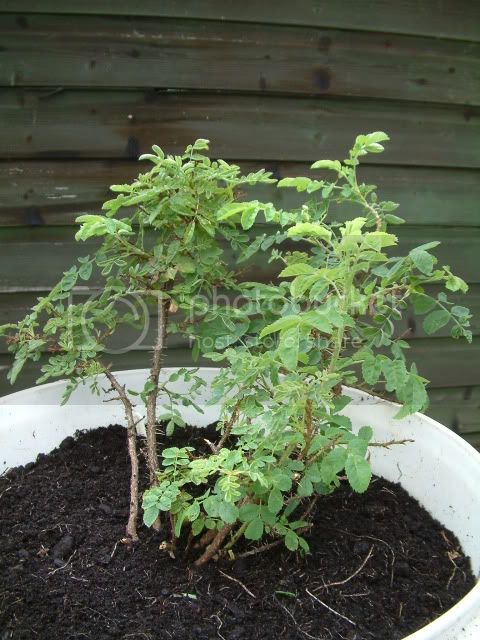Hi Jadae!
Thanks! - Laughed about what you wrote on Topaz Jewel. 
Your thoughts on the rugosas and benefit by different colourings is what I think, too. Rugosas in yellow / apricot or brown colours would be away from the main stream rugosas which the eye knows well - perhaps too much of it.
Your idea with sunshine (i believe you meant the Noack rose from the nineties) sounds plausible.
On the other hand you never now then for the descendants, where your yellow colour is from … .
E.g. here in this hybrid, its quite sure from Canary bird.
That can be an advantage, to know something about the source of the traits - even some descendants further.
Hi Adam! (And also an answer to Jink on the above question of yellow colour traits.)
Yes there seem to be technically different ways to inherite yellow colours.
If the molecules (which all of them are carotinoide derivates) that are responsible for the colouring are produced by chromoplasts (bacteria-like organells with own DNA) in the cell plasma, than that kind of trait - and its whole spectrum of blends and variations - will be inherited only maternally!
If the molecules are part of the vacuole, the controling biochemistry for their production seems to be inherited via classical mendelian ways and the caryon.
I might be wrong, but thats in parts what I think (and there are some variants that could also be possible, e.g. some interferring effects etc. - but only time, exploring and also further readings of articles will tell, whats right in the end - if ever.)
Hi Max!
Thank you for your kind comment! Some day I will perhaps introduce roses to the market. But its not the main goal for me to earn money.
The passion for the challenge is perhaps even the better vehicle to get through the long time periods from the wild rose seeds to until the flowers of the hybrids then open.
No professional sciencentist can compete with the true love of an amateur, in the long run.
And there are only few people who live both parts, the professional way and do have the passion.
I am no professional breeder either, but with a bit of knowledge and the love for the roses, I might get some interesting outcomes one day. 
Greetings to you all,
Arno

